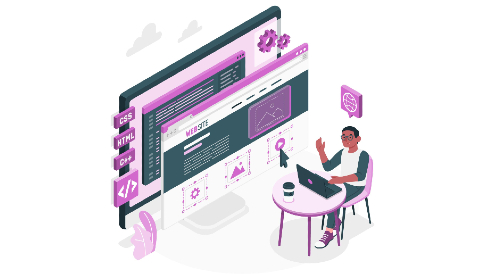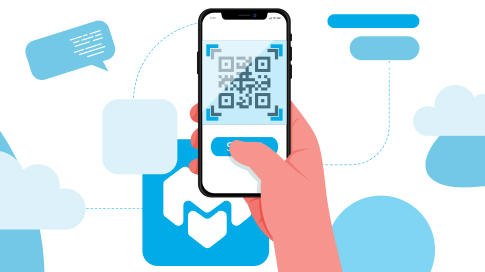3 Common Types of SaaS Attacks and How to Prevent Them
Software as a Service (SaaS) has come a long way, offering a flexible approach toward applications over the Internet. It has become commonplace for every workforce, office, company, and individual. SaaS is in great demand worldwide, from Google Docs, Microsoft Office, Zoom, and Google Sheets to Slack. While SaaS brings stability to work and gives a user-friendly approach to people, it brings security risks and attacks as well. There has been a significant rise in cyber-attacks that break into SaaS. Since thousands of users are accessing the software at once, this ultimately increases the risk of a security violation. As a result, cyber-criminals get access to many confidential resources like credentials, documents, administrative rights, and emails, and mobile application security testing or security testing and measures on all the company’s online and offline resources are necessary.
There are 3 common types via which threat actors attack the software. Coming up next, we’ll discuss them in detail notes and guide you on how to prevent them by using free malware removal. So let’s get started!
3 Common Types of SaaS Attacks
The most frequent attacking types are as follows.
- OAuth phishing attacks.
- Malicious Web Extensions.
- Brute-Force Attacks.
1. OAuth Phishing Attacks
OAuth is a standard authorization protocol that allows access to your profile without sharing a password. Any program or application uses a standard security framework to authenticate the person as an official user. For that purpose, it designates a password to sign in. On the other hand, OAuth uses a protocol to allow programs and applications for secured access. For instance, Facebook allows a promotional campaign to give an alert on your profile without sharing your password.
Cybercriminals use a combination of OAuth and phishing attacks to target users. They create a malicious app pretending to be a legitimate one. Usually, they create a rogue one generated from legitimate sources of office 365 accounts. Afterward, they target the victim and ask them to click on the given source, which indirectly gives the threat actor your authorization. The app looks genuine, and once the user grants permission, it takes the user to a web page asking for consent. If everything goes successfully, the threat actor can access vital resources like a contact list, important files, email list, etc.
Cybercriminals use this technique very frequently to target users. In July 2020, Microsoft sued an attacker for hacking confidential resources for 6 months. It is further learned that the attacker had hijacked 62 countries via an OAuth phishing attack. So it is one of the most common attacks that occur in SaaS.
2. Malicious Web Extensions
The next most common type of attacking SaaS is using a malicious web extension. Web extensions are trendy nowadays and give users a quick interface to visit websites and applications without bothering to write a web address. All you have to do is, install an extension on a web browser and get access anytime, anywhere. Google Chrome is the most common web browser used worldwide for web browsing. Similarly, Google Chrome has more than 200,000 web extensions and a 63% market share.
Attackers use this trendy idea to trap SaaS users; they create a malware web extension that pretends to be benign. This extension authorizes hackers to access a user’s sensitive information. There are two forms of malware extensions,
- Benign extension but not harmful: The benign extensions do not violate security aspects but affect the end user interface. It hijacks the overall functionality.
- Harmful benign extension: The other version of malware is benign, and it’s a harmful way to access users’ privacy.
Installing malware extensions is quite common, and more than 3 million users were found installing malware extensions. These extensions collect data via your web browser and watch all your online browsing. Later on, it represents phishing apps to install pretending to be genuine and authentic. This collects data and hijacks traffic to gain a financial edge, and it is difficult to figure out whether updates or the extension were malicious.
SaaS users must realize that when things turn upside down, the malware design looks natural and is eventually known as a very threatening attack. Still, it can be prevented by using free malware removal.
3. Compromising Valid Accounts
As we all know, SaaS applications are interconnected, allowing threat actors to penetrate multiple applications. Typically it is done by compromising valid accounts using phishing hacks. This is the most deadly attack on SaaS applications because it extracts helpful resources and sensitive information once the hacker gets the password. During an inspection, Microsoft detected 25 billion attempts to violate the security factors of their enterprise customer account. Phishing attack helps them steal a valid password, which is further tried on various applications using a set of accounts.
Such attacks are pretty brutal and done to get sensitive information. In July 2020, The Russian state-sponsored actor campaign uncovered spent nearly two years actively gathering sensitive data from networks of numerous cleared defense contractors in the United States. The objective was to steal information, including weapon, vehicle, and missile design, aircraft design, and even data analytics of the USA; they wanted to acquire sensitive technology and information related to the nation’s defense.
To gather information from Office 365 resources like profiles, emails, and SharePoint, the Russian state-sponsored actors behind this campaign used compromised Office 365 service accounts, including accounts with global administrator privileges. This altogether showed the intensity of the SaaS attack and could get many providers in great trouble.
Ways to Prevent Security Risk
SaaS is the future and will be extensively grown, considering current stats. However, cloud computing security is at risk, and providers must arrange effective measures to keep users’ sensitive data safe. Still, there are some ways you can use to remove malware. Check them out!
● Due Diligence
The best way to prevent security breaches is by inspecting the vendor’s security proactively throughout the lifecycle, and it should be done more than during the venting process. Enable your security team to avoid negligence by scaling their efforts.
● Watch Out Third Party Attack
As the vendor list increases, the provider is seen as significantly non-complying with the procedure. They only respond when they see the threat. Eventually, third-party attacks are the primary cause of security violations. As a provider, ensure no third-party involvement on your SaaS.
● Regular Inspection
Providers must send routine security inspections to high-risk vendors, such as SaaS providers, to ensure they comply with all regulatory requirements. This minimizes hijacking risk to a significant extent.
● Train Staff
Cloud computing skyrocketed during the pandemic breakout, and so did the security risk. Therefore, training your staff with all technical insight could minimize privacy violations. Staff education initiatives should be included to keep all employees up to date on free malware removal and security requirements.
● Integrate Single Sign-On (SSO)
Another effective option is including SSO solutions as part of your apps. By choosing to add SSO into your app, users can access multiple applications using just one set of login credentials. This enhances user convenience and bolsters security by minimizing potential entry points for cyberattacks, limiting your exposure to threats.
SaaS Attacks – Conclusion
Cloud computing and SaaS can help businesses to provide end-to-end integration to get the best out of themselves. By the end of 2022, the market is expected to reach $489 billion. So keeping up with the security aspect is exceptionally crucial. Cybercriminals mainly use the 3 common ways to hijack the system, which can be avoided with the abovementioned methods.




Leave a Reply